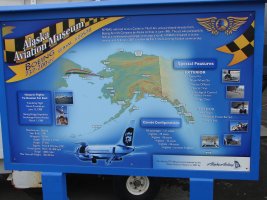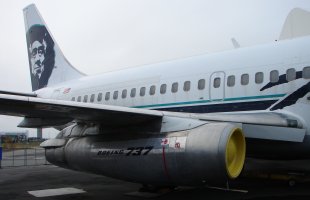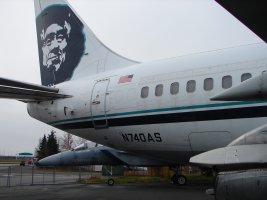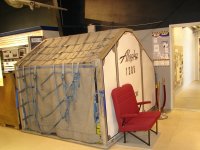Alaska Airlines B-737 Combi
Boeing 737-290C built in 1981
Pratt and Whitney JT8D-17 SER Turbo-jet engines




N740AS, referred to as a Combi or Mud Hen, was purchased directly from Boeing Aircraft Company by Alaska Airlines in June 1981. The jet was purposefully built as a combination passenger and cargo aircraft. N7040AS remained in active service until February 2007 and flew 68,941.2 hours serving Alaskan communities.
This plane was on the historic Friendship Flight from Nome to Provideniya on June 13, 1988 and the Bearing Bridge Expedition from Anchorage to Nome to Anadyr on March 1, 1989
ADN.com - 2017-10-18 The last Alaska Airlines Combi Jet Retires
Special Features
|
Combi Configurations
|
| Manufacturer: | Boeing |
|---|---|
| Model: | 737-290C |
| Year Built: | 1981 |
| Construction Number(C/N) | 22578 |
| Wingspan: | 93 feet |
| Length: | 100 feet, 2 inches |
| Height: | 37 feet |
| Engines: | Pratt & Whitney JT8D-17 SER |
| Cruise Speed: | Mach .74, 485 mph |
| Range: | 1,800 miles |
| Max Take-off Weight: | 128,100 lbs |
B737 Wheel Well
Gravel Operations
This plane is equipped with at (Wikipedia) Pratt & Whitney JT8D turbo fan engine.
According to Wikipedia, this engine has an Air Mass Flow of 331 pounds per second.
A cubic foot of air weighs approximately 0.0807 lbs
331 pounds of air is approximately 4,101 cubic feet.
A 737 has a maximum cabin width of 11 feet 7 inches.
That works out to the equivalent volume of a box 11 feet wide, 6 feet high by 62 feet long (that is about the size of the main cabin) flowing at 42 miles an hour through one engine in one second. Do you think that much air might suck stones off of a gravel runway?
The Vortex Diffuser releases compressed air from the turbine to disrupt the the possibility of a vortex from forming. Here are a couple of vortex pictures that show a vortex over 8 feet high.



